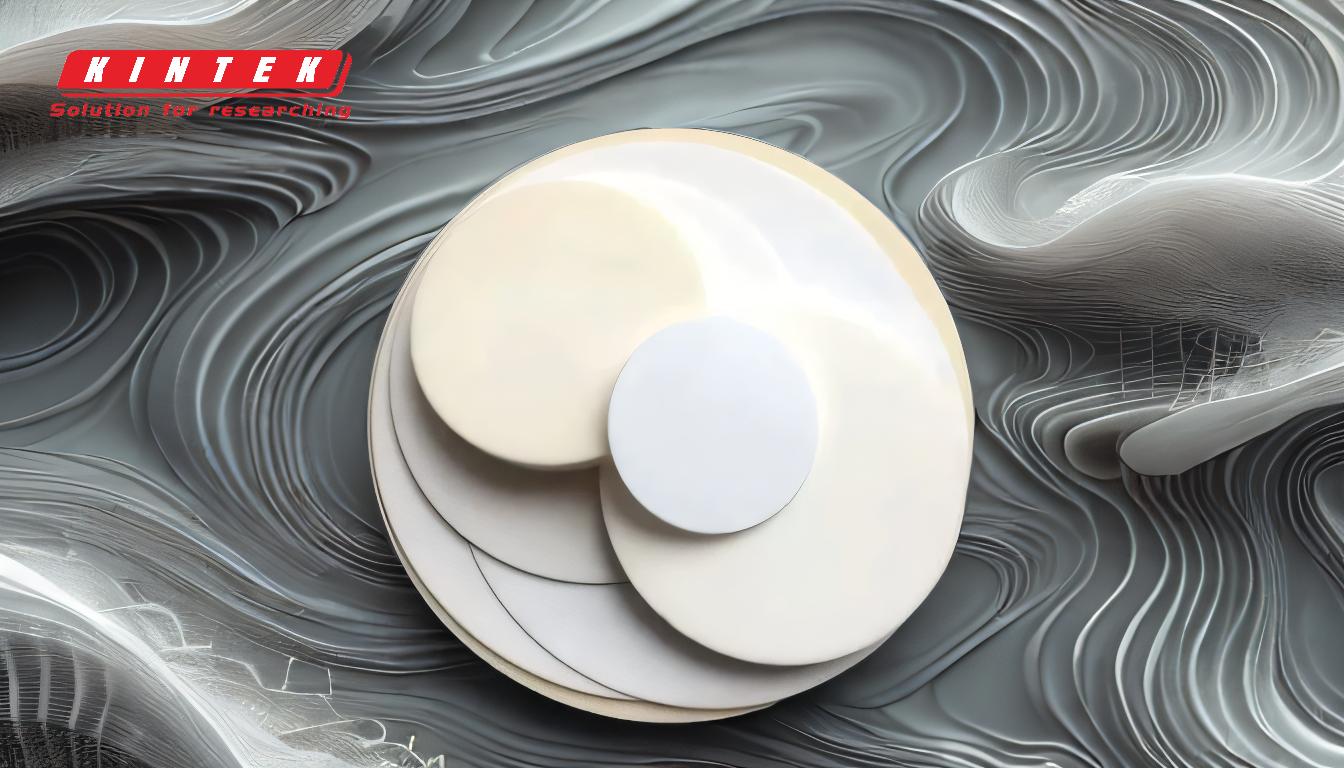In short, most ceramics are exceptionally resistant to heat, but they can be highly sensitive to sudden changes in temperature. This critical distinction is the key to understanding their behavior. While a ceramic component can often withstand temperatures that would melt most metals, taking a hot ceramic piece and plunging it into cold water can cause it to crack or shatter.
The core issue isn't a sensitivity to heat itself, but a vulnerability to thermal shock. Ceramics generally excel at high, stable temperatures, but rapid heating or cooling creates internal stress that their rigid, brittle structure cannot absorb, leading to catastrophic failure.

Why Ceramics Are Fundamentally Heat Resistant
To understand a ceramic's behavior, we must look at its atomic structure. This is where its strength originates.
The Power of Atomic Bonds
Ceramics are defined by incredibly strong ionic and covalent bonds between their atoms. These bonds require a tremendous amount of energy to break.
This atomic-level stability is why most ceramics have extremely high melting points, often far exceeding those of metals. Materials like alumina or silicon carbide can remain solid and stable at temperatures of 1,500°C (2,732°F) and beyond.
Low Thermal Conductivity
Most ceramics are excellent thermal insulators, meaning they do not transfer heat well. This property is known as low thermal conductivity.
Think of the ceramic tiles on a space shuttle or the ceramic lining in a kiln. Their purpose is to block heat, protecting the structure underneath. While the surface may get red-hot, the other side remains significantly cooler.
The Real Vulnerability: Understanding Thermal Shock
The combination of heat resistance and poor heat conductivity creates a unique weakness: a susceptibility to thermal shock.
The Mechanism of Failure
When you rapidly heat or cool a ceramic object, one part of it (e.g., the surface) changes temperature much faster than another (e.g., the core).
The hot part expands while the cool part does not. This differential expansion creates immense internal stress. Since ceramics are brittle—meaning they break before they bend—this stress has nowhere to go. The result is a crack.
The Role of Thermal Expansion
This behavior is governed by a property called the Coefficient of Thermal Expansion (CTE). It measures how much a material expands for each degree of temperature increase.
A material with a high CTE will expand and contract significantly with temperature changes, making it more prone to thermal shock if its thermal conductivity is also low. Some specialized ceramics are engineered to have a near-zero CTE to combat this very problem.
Not All Ceramics Are Created Equal
The term "ceramic" covers a vast range of materials, from a simple coffee mug to a high-performance engine component. Their thermal properties vary dramatically.
Traditional Ceramics
This category includes pottery, porcelain, and brick. While more heat resistant than many materials, they are generally porous and have lower strength, making them quite susceptible to thermal shock. This is why a hot ceramic casserole dish can crack if you place it on a cold, wet countertop.
Technical or "Engineering" Ceramics
These are highly pure, advanced materials developed for specific performance goals. Examples include:
- Alumina (Aluminum Oxide): Widely used for its high-temperature stability and electrical insulation properties.
- Zirconia (Zirconium Dioxide): Known for its exceptional strength, fracture toughness, and low thermal conductivity. Some forms of zirconia are specifically designed for thermal barrier coatings.
- Silicon Carbide & Silicon Nitride: Extremely hard and strong materials that maintain their mechanical properties at very high temperatures, making them suitable for engines and furnace parts.
Making the Right Choice for Your Application
Understanding these principles allows you to select the appropriate material for your specific goal.
- If your primary focus is cookware or household use: Choose ceramics specifically rated for oven use and always avoid sudden temperature changes, such as running cold water over a hot dish.
- If your primary focus is high-temperature industrial processes: You need a technical ceramic like Alumina or Silicon Carbide, chosen for its specific maximum use temperature and thermal stability.
- If your primary focus is managing extreme temperature cycles: You require a specialized, thermal-shock-resistant ceramic, such as certain grades of Zirconia or materials specifically engineered for a low coefficient of thermal expansion (CTE).
Ultimately, a ceramic's relationship with heat is one of high resistance but low tolerance for rapid change.
Summary Table:
| Property | Traditional Ceramics | Technical Ceramics |
|---|---|---|
| Heat Resistance | Good | Excellent (e.g., 1500°C+) |
| Thermal Shock Resistance | Low | Varies (High for specialized grades) |
| Key Applications | Cookware, pottery | Engines, furnaces, lab equipment |
| Example Materials | Porcelain, brick | Alumina, Zirconia, Silicon Carbide |
Need a ceramic solution for high temperatures or thermal cycling? KINTEK specializes in advanced lab equipment and consumables, including thermal-shock-resistant ceramics like Zirconia and Alumina. Let our experts help you select the perfect material for your laboratory's unique challenges. Contact us today to discuss your application!
Related Products
- Laboratory Muffle Oven Furnace Bottom Lifting Muffle Furnace
- 1800℃ Muffle Oven Furnace for Laboratory
- 1400℃ Muffle Oven Furnace for Laboratory
- 1700℃ Muffle Oven Furnace for Laboratory
- 1400℃ Laboratory Quartz Tube Furnace with Alumina Tube Tubular Furnace
People Also Ask
- What are the materials used in a muffle furnace? A Guide to Durable Construction & Optimal Performance
- At what temperature is it safe to open a muffle furnace? A Guide to Preventing Injury and Equipment Damage
- How hot can a lab furnace get? Match the Right Heating Technology to Your Application
- What is the temperature range of a furnace? From 1100°C to Over 2000°C Explained
- What is the power requirement for a muffle furnace? Ensure Safe and Efficient Operation



















